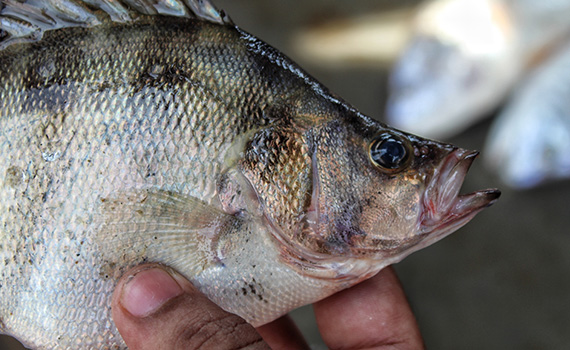
Producing healthy barramundi — one of sustainable aquaculture’s great hopes
Barramundi currently represents a fairly small subsector of global aquaculture, but production is rising fast. Josh Goldman, CEO of Australis, the world’s largest producer of barramundi, says it’s a fish uniquely suited to sustainable growth.

Josh Goldman, Co-founder and CEO, Australis Aquaculture
“Barramundi is now positioned as the species with the greatest potential to support the growth of tropical marine aquaculture and help support growth in global seafood supply. What has been missing in the region is a fish that has the technical foundation for production and is appreciated across a range of different markets,” he explained.
“As a species it has a very distinctive life history. It spawns on the lunar cycle, has high fecundity, is endowed with the ability to utilize diverse feed ingredients and is quite hardy. It’s got a lot going for it from both a geographical and biological standpoint.”
RAS for juveniles offers control
Australis’ production cycle has three phases: hatchery, land-based nurseries using recirculating aquaculture systems (RAS) and ocean-based grow-out pens.
“A lot of the challenges with barramundi are in the juvenile stages where you’re subject to both bacterial and viral diseases, such as Vibrio and Streptococcus, as well as potential issues with parasitism,” he said.
“We’re using RAS during the early life stages so we can more fully control biosecurity, temperature and salinity, in an effort to reduce disease risk.”
Vaccination backed by monitoring
Goldman describes vaccination as the “backbone” of efforts to maintain healthy fish populations. Keeping on top of circulating pathogen strains is another key element of the company’s approach.
“We have a multivalent strategy. We utilize a combination of licensed vaccines and autogenous vaccines,” he explained.
“We’re very active in tracking strains that are present in our environment, particularly for Vibrios. You can see rapid changes, where a vaccine that worked well a few years ago may not provide as strong protection today. We rely on regular agglutination to ensure our vaccines offer strong protection.”
Experimental feeds offer health benefits
Feed choices also play an important role in maintaining fish health, he continued, and in this respect, it’s certainly not a matter of “business as usual.”
“We make use of a broad range of functional feed additives. We have continuing R&D around the efficacy of phyto compounds such as quorum-sensing disruptors or natural anti-microbials that have a specific affinity for Vibrios. We’re utilizing probiotics and immunostimulants,” he said.
“We’re also actively seeking to enhance immunity and mucosal health, particularly during the transfer period.”
An emerging disease challenge is Lates calcarifer herpes virus, a novel virus affecting Southeast Asian barramundi aquaculture. Keeping on top of emerging threats requires a dedicated team with strong diagnostic capabilities.
“In the end, you have to invest in learning how to optimize fish health on your sites. We have an internal fish health team with eight people, led by an aqua veterinarian with an on-site laboratory as well as collaborations with a number of outside entities,” he added.
Posted on: November 01, 2021






